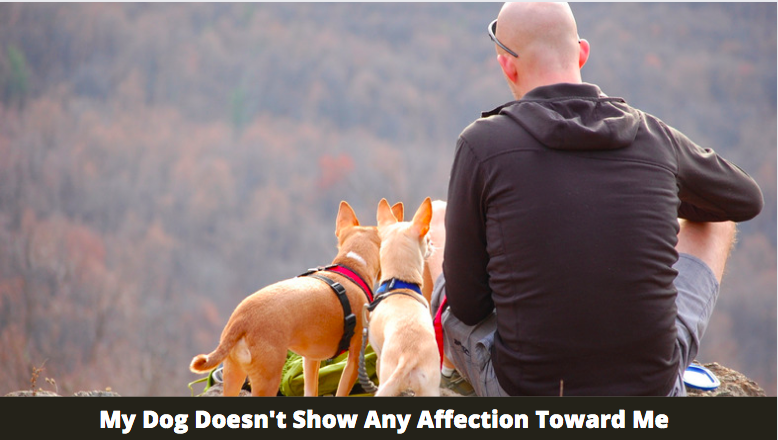My Dog Doesn’t Show Any Affection Toward Me – What Should I Do?
It’s likely that when you initially got your dog, you dreamed of a future in which you and your puppy would spend as much quality time together as possible.
Whatever you were doing together, whether it was chasing balls in the park or cuddling on the couch, you felt you were best friends. Instead, you’re left scratching your head, wondering why your dog isn’t friendly toward you, and trying to figure out if it’s your fault or your dog’s fault that this is happening.
Isn’t it true that dogs are supposed to be man’s best friend?
Moreover, if that’s the case, why doesn’t yours seem very interested in being extremely physically close to you?
Why Do Some Dogs Show No Signs of Affection?
Taking it personally if you believe that your dog is not affectionate toward you is a bad idea. It’s very likely that it has nothing to do with you.
There are a variety of factors that contribute to dogs’ lack of affection.
First and foremost, if your dog was adopted, it’s possible that his previous home neglected or perhaps abused him in some way. If this is the case, your dog may experience trust issues or even become fearful of humans.
Additionally, your dog, like some humans, may like having his or her own personal area. Not everyone finds a great deal of physical intimacy to be pleasurable.
When it comes to being petted, being physically close to, and cuddling, animals and humans have very different perspectives. Dog snuggling behaviour varies from dog to dog as well as from breed to breed.
Dogs can also be territorial or treat another member of the family as their best buddy, depending on their temperament.
In the event that your dog is affectionate toward other members of the family, or if you are being introduced to the dog for any reason, it is possible that it will take some time for him to become affectionate toward you.
Finally, it is possible that your dog is simply expressing his devotion for you in different ways.
Don’t overlook the indicators that he is interested simply because you anticipated he would demonstrate affection by cuddling. He’s most likely already showing you something in a different way.
Dogs express affection in a variety of ways.
The discovery that you and your pet don’t communicate in the same love language is a disappointment. However, this does not imply that your dog is incapable of demonstrating his affection for you.
Dogs want to please their pet owners, and every pet is different; think about how your dog wants to please you.
It’s possible that someone is trying to get your attention. For example, pursuing and retrieving a ball or stick might be as simple as having fun.
By participating, it’s as if your dog is saying, “I’ve brought you this gift of a slobber- and dirt-covered ball because I care about you,” and you’re just playing along.
If you go for a run with your pet, pay attention to how well he keeps up with you.
Even though your dog would most likely outpace you from the start if you let him, his training and desire to please you are only another method to demonstrate that he is concerned.
There are a variety of different signals of attachment that could be present.
Do you ever get home from work and see your dog peering out the window, anticipating your return?
What about when you aren’t playing, does he come to you with a toy or a treat that you can share together?
Despite the fact that your dog may not enjoy cuddling on your lap, he may be attempting to communicate how delighted he is to be in your company – just search for the evidence.
Understand Your Pup’s Health and Fitness Level
Not all dogs are loving, but if your dog was once cuddly and has suddenly stopped being so, this could be an indication that something is wrong.
Any significant changes in your dog’s behaviour or activities may necessitate a trip to the veterinarian to ensure that there are no underlying problems, such as disease or injury.
Finally, if you want to promote more cuddling from your pet, you’ll have to put in some effort to teach him to be more friendly toward you.
Make goals that are reasonable for him based on his characteristics. Perhaps you can teach him to give high-fives or to reward him with a nutritious treat every time he allows you to pet his head for a brief period of time.
Never allow food to be your primary source of affection since you will instil undesirable habits in him and, worse, you will put his weight at risk by overfeeding him in the process.
It’s important to remember that positive reinforcement is the key to success.
The more you stimulate your dog, the more he will be willing to show affection – as long as it is within the parameters of his personality.
Fact-Finding:
Thanks for reading and have a great day! My Dog Doesn’t Show Any Affection Toward Me?
Please post your thoughts in the comments section if you have any. Please feel free to share!

